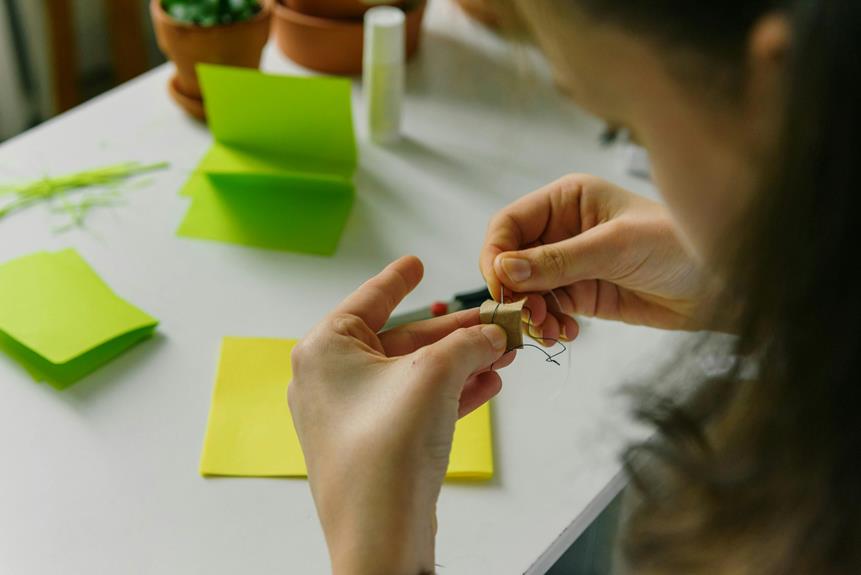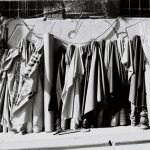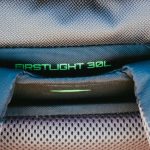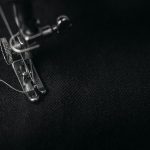When you're working on sewing projects that need to withstand the elements, knowing how to waterproof them effectively is essential. You might think any fabric will do, but the right material can make all the difference. From selecting water-resistant fabrics to applying coatings and sealing seams, each step plays a critical role in ensuring your creations stay dry. If you're wondering about the best techniques and materials to use, you'll find that some methods stand out more than others, and understanding this can elevate your projects significantly.
Table of Contents
Key Takeaways
- Select waterproof fabrics like ripstop nylon or polyurethane laminate to ensure durability and moisture resistance for your projects.
- Apply waterproof coatings such as sprays or liquid treatments to enhance water resistance before sewing.
- Use seam sealing techniques with liquid sealers or adhesive tape to prevent moisture from penetrating seams.
- Regularly inspect and clean your waterproof items to maintain their effectiveness and prolong their lifespan.
Understanding Waterproof Fabrics
Waterproof fabrics are essential for keeping your sewing projects dry, and they often feature specialized coatings or treatments that repel water effectively. When you choose these fabrics, you'll notice they come in various types, each offering unique benefits. For example, some fabrics are treated with polyurethane or silicone, while others might be woven tightly to prevent water penetration.
Understanding the properties of waterproof fabrics helps you make informed decisions. Breathability is another important aspect; you don't want your projects to trap moisture, leading to discomfort or mold. Look for fabrics labeled as 'water-resistant' or 'waterproof,' but remember that waterproof doesn't always mean 100% impermeable.
When working on outdoor gear, consider the fabric's weight and durability, as you want it to withstand harsh conditions without tearing easily. Additionally, remember that seams can be vulnerable points. Therefore, techniques like sealing or taping seams can enhance the waterproofing of your projects.
Choosing the Right Materials
When selecting materials for your waterproof sewing projects, consider factors like durability, weight, and breathability to ensure optimal performance.
Start with durable fabrics such as nylon or polyester. These materials resist wear and tear while providing the necessary waterproof qualities. Look for fabrics with a high denier count, as they typically offer increased strength.
Weight matters too; lighter fabrics are easier to work with and can reduce bulk in your finished projects. However, don't sacrifice durability for weight. A balance is key.
Breathability is another crucial aspect, especially if your project involves clothing or gear you'll wear for extended periods. Fabrics with moisture-wicking properties can help keep you comfortable by allowing sweat to escape while still keeping water out.
Also, consider the intended use of your project. For instance, if you're making a bag that'll see heavy use, opt for a thicker material. For lighter items like raincoats, a softer, more flexible fabric may be ideal.
Applying Waterproof Coatings
Applying a waterproof coating can significantly enhance the water resistance of your sewing projects, ensuring they withstand the elements effectively. There are several types of waterproof coatings available, and your choice will depend on the fabric and the intended use of your project. Generally, you can find sprays, paints, or liquid coatings that are easy to apply and offer varying degrees of protection.
Here's a quick comparison to help you decide:
| Coating Type | Pros |
|---|---|
| Spray Coating | Quick and easy application |
| Liquid Coating | Deep penetration for stronger bond |
| Paint Coating | Excellent for heavy-duty projects |
| Silicone Coating | Flexible and durable finish |
| Wax Coating | Natural, eco-friendly option |
Before applying any coating, ensure your fabric is clean and dry. Follow the manufacturer's instructions for the best results, and consider testing on a small area first. With the right waterproof coating, you'll add a layer of protection that keeps your sewing projects looking great and functioning well, no matter the weather.
Techniques for Seam Sealing
Seam sealing is a vital step for ensuring your waterproof sewing projects hold up against moisture, complementing the waterproof coatings you've already applied.
To get started, choose a seam sealer that suits your fabric type—liquid, tape, or adhesive. Liquid seam sealers work great for various fabrics; just apply them along the seams with a brush or applicator.
If you prefer seam tape, make sure to select one that's compatible with your material. Cut the tape to length, place it over the seams, and use an iron to activate the adhesive. Be careful with the temperature to avoid damaging the fabric.
For a more robust option, you can use a waterproof adhesive, which provides an extra layer of protection. Apply it directly to the seams, ensuring you cover any exposed thread.
Always follow the manufacturer's instructions for drying times and application methods. After sealing, consider testing your project with a small amount of water to check for leaks. This step's crucial to ensure your hard work pays off, keeping you dry and comfortable in wet conditions.
Maintenance Tips for Longevity
To ensure your waterproof sewing projects last, regularly inspect and clean them to remove dirt and debris that can compromise their effectiveness. Taking a few simple maintenance steps helps maintain their waterproof qualities and extends their lifespan.
Here's how you can keep your projects in top shape:
- Wipe Down: After each use, wipe the surface with a damp cloth to remove any residue.
- Check Seams: Regularly examine seams and edges for signs of wear or leaks, and re-seal if necessary.
- Avoid Harsh Chemicals: Use mild soap and water for cleaning; harsh detergents can damage waterproof coatings.
- Store Properly: Keep your items in a cool, dry place away from direct sunlight to prevent degradation of materials.
Creative Ideas for Waterproof Projects
When you're ready to tackle waterproof sewing projects, choosing the right fabric can make all the difference.
Think about how you can create functional items like bags, outdoor gear, or even raincoats that stand up to the elements.
Let's explore some creative ideas that combine style and practicality with waterproof materials.
Waterproof Fabric Choices
Exploring various waterproof fabric options can elevate your sewing projects, making them both functional and stylish. When choosing materials, you'll want to consider the specific needs of your project, from durability to flexibility.
Here are some great fabric choices for your waterproof endeavors:
- Ripstop Nylon: Lightweight and incredibly strong, ripstop nylon is perfect for outdoor gear and bags.
- Polyurethane Laminate (PUL): Soft and flexible, PUL is ideal for items like diaper covers and reusable bags.
- Canvas: A heavy-duty option, waterproof canvas is excellent for tote bags and outdoor cushions.
- Vinyl: Easy to clean and available in various colors, vinyl is perfect for tablecloths and shower curtains.
Functional Project Examples
With the right waterproof fabrics at your disposal, you can create a variety of functional projects that stand up to the elements while showcasing your creativity.
Consider making a waterproof tote bag; it's perfect for trips to the beach or farmers' market. Choose a fun print and add sturdy straps for durability.
Another great option is a raincoat or poncho. This project not only protects you from the rain but also lets you express your style with unique patterns.
If you're looking for something smaller, think about waterproof pouches or zipper bags for your toiletries or electronics. They're handy for travel and keep your items safe from water damage.
You could even dive into making outdoor cushions. Waterproof fabric can keep your patio furniture comfy and dry, ensuring they're ready for use at a moment's notice.
For pet owners, a waterproof pet bed is an excellent way to keep your furry friend's space clean and dry.
These projects aren't just practical; they reflect your creativity while adding functionality to your everyday life.
Frequently Asked Questions
Can I Waterproof Fabrics That Are Not Specifically Labeled as Waterproof?
Yes, you can waterproof fabrics not labeled as waterproof. You'll need to apply a waterproofing spray or treatment specifically designed for the fabric type. Just follow the instructions carefully for best results and durability.
Do Waterproof Coatings Affect the Fabric's Breathability?
Yes, waterproof coatings can affect breathability. When you apply a coating, it often creates a barrier, reducing airflow. Depending on the material and coating type, the impact on breathability can vary significantly.
How Do I Know if My Project Needs Waterproofing?
You'll know your project needs waterproofing if it's exposed to moisture, like outdoor gear or items for wet environments. Also, consider the fabric's intended use; if it's likely to get wet, waterproofing's essential.
Can Waterproofing Treatments Be Reapplied After Wear?
Yes, you can reapply waterproofing treatments after wear. Just clean the fabric, follow the product instructions, and ensure even coverage. Regular maintenance keeps your projects effective and extends their lifespan against moisture.
What Tools Are Essential for Applying Waterproof Coatings Effectively?
To apply waterproof coatings effectively, you'll need a clean workspace, appropriate fabric, a spray or brush applicator, protective gloves, and a well-ventilated area. Gathering these tools will help you achieve the best results.
- The Role of Guipure Lace in Haute Couture and Designer Collections - June 25, 2025
- Identifying High-Quality Guipure Lace: A Buyer’s Guide - June 25, 2025
- Why Is Guipure Lace so Expensive? a Look at Quality and Craftsmanship - June 25, 2025







